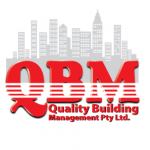Do you have Asbestos in your buildings or machinery?
How do you identify asbestos?
After reading about asbestos products, you may think they are easy to spot; just look for hairy, fibrous materials, right? Wrong. Asbestos testing is harder than you think.
This is an important task, best left to experts. Lengths of asbestos mineral fibers range from 2 to 5 millimeters, and are barely visible. Processing and bonding fibers into cement and other materials conceals the raw appearance of asbestos, making it impossible to identify asbestos containing materials (ACMs) without magnification and expertise.
You can’t see asbestos in products by just examining with the naked eye. You need a powerful microscope, and expert knowledge of these minerals. In fact, according to the National Occupational Health and Safety Commission, only those trained in identification of asbestos containing materials are qualified to make these determinations.
SAMPLING
How do you determine if a material contains asbestos? Collecting samples and sending to an approved NATA Accredited laboratory is the only way to positively confirm the presence of asbestos. Sampling is a highly specialised procedure, and can disperse asbestos fibers, contaminating the area if not performed carefully.
The use of an “asbestos gun” IS NOT an approved method of identifying asbestos under Australian Work Health and Safety Legislation.
If you wish to take your own samples, please follow the appropriate instructions and send to QBM for analysis.

ASSUMING ASBESTOS
The current Work Health and Safety Legislation states that you can just assume the building materials contain asbestos.
If you assume things contain asbestos, you will be wasting money and putting the health of your staff and visitors at risk.
- If you just assume things contain asbestos, you MUST assume everything contains asbestos, unless you can prove it is asbestos free;
- Any person or child can say that they don’t know if an item contains asbestos or not, so they must assume that it contains asbestos;
- If you assume all things contain asbestos, then you must spend the extra money for any works on site and to reassess the materials on a regular basis;
- You will spend $thousands in treating materials as containing asbestos when in fact they may be free of asbestos;
PROTECT YOURSELF, STAFF, AND VISITORS.
Contact QBM to test samples to prove if asbestos is present.

